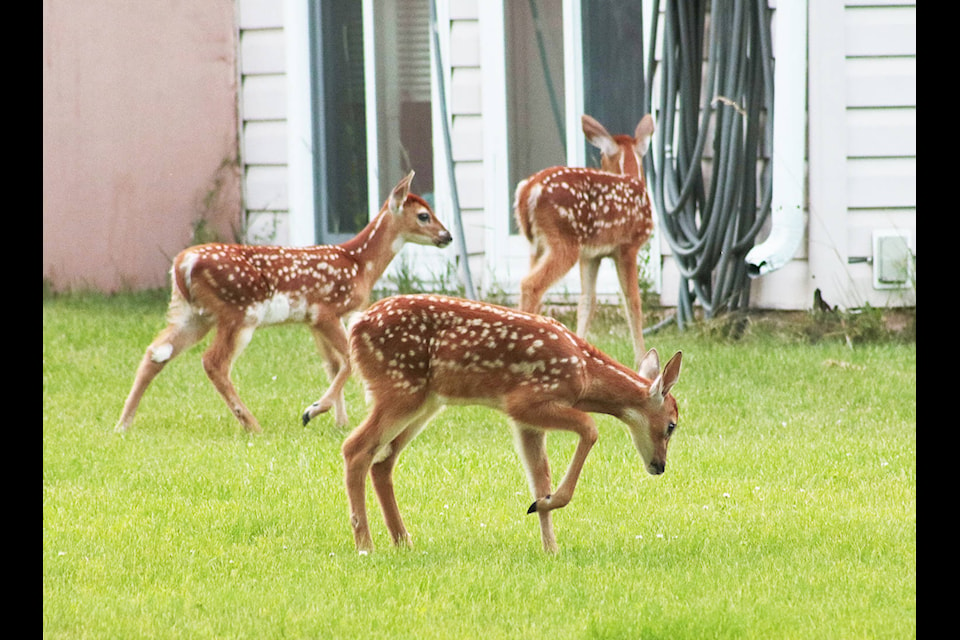Anna Bachmier is calling for the City of Grand Forks to take action on the urban deer population after an attack on her father Dave and his service dog Pinaar on June 15.
Dave and Pinaar had been out at the local Legion for a meeting, and while Dave was grabbing Pinaar’s service-dog vest from his truck, a deer charged out of the woods.
Pinaar had her back to the deer and was focused on Dave, and neither saw the deer until it was on top of Pinaar. The attack left Pinaar with a cut on her back that required internal and external stitches, and a lacerated shoulder muscle.
Since then, the stitches have been removed, and the rear injury seems recovered, while Pinaar continues to deal with a large hematoma on her shoulder.
The incident once again thrust the issue of the deer population in Grand Forks into the spotlight. It is a contentious issue that has seen discussion and debate in the community for decades.
“The deer have been an issue since my first term back in 1997,” said Grand Forks Mayor Brian Taylor.
“We’re over-populated here with deer. I can’t say they’re not a continuing problem to a lot of people; to others they’re an indication of what a wonderful town we have that we’re living with nature. “
READ MORE: Funding available to control B.C. urban deer population
In previous counts of the population, there were around 200 to 300 deer in the city’s limits. It’s estimated that the current population is still around that number.
Due to the over-population of white-tailed deer in the area, during the winter months there is a shortage of food for the animals, which has helped to keep the population from growing even further. However, there are many people in the area who feed the deer, particularly during the winter.
In a post to Facebook about the attack, Anna Bachmier called out people who feed deer. The city has a no-feeding bylaw, but the mayor noted that it is based on complaints and has not yet been enforced.
“So we can say we haven’t had any complaints, but we can’t deny that some people are chronic deer feeders,” said Taylor.
At the time of the attack, it was fawning season for the deer, when they become more aggressive. Even outside of that time frame, the creatures are a potential source of danger for residents and travellers through the area.
“We’ve had discussions about better safety measures on the main drag,” said Taylor. “They’re a constant danger for bicyclists and motorcyclists in particular, but we understood early on the majority of animal interactions were with cars. I’m a motorcyclist, and I’ve had a couple of really close calls with deer. It’s one of my fears and one of the reasons why I don’t drive at night if I can avoid it.”
Although the year has been busy with other issues for the City of Grand Forks, discussion around the deer population has returned following Bachmier’s sharing of Pinaar’s attack.
“Anna’s experience has brought the issue to light again, and we have been so distracted with survival,” said Taylor. “First with the flood and then with COVID. This is going to put it back onto the table.”
It will be up to city council to decide on what action is to be taken. The next meeting of the council is on Aug. 17.
Brennan.Phillips@grandforksgazette.ca
Like us on Facebook and follow us on Twitter.
